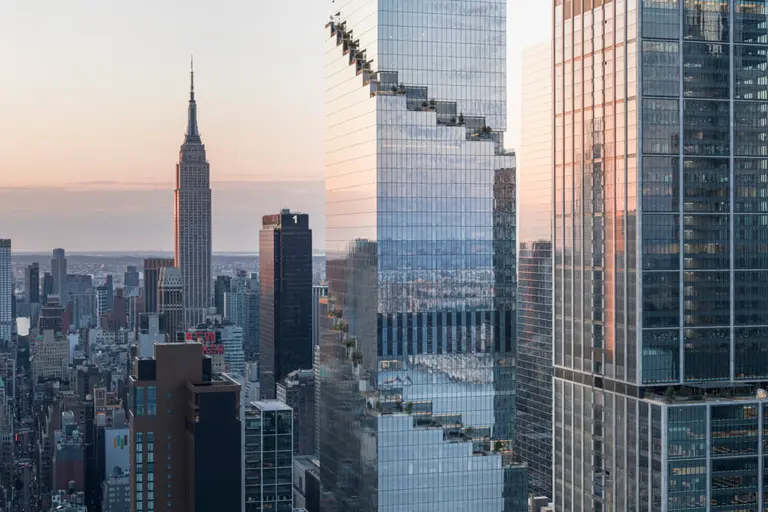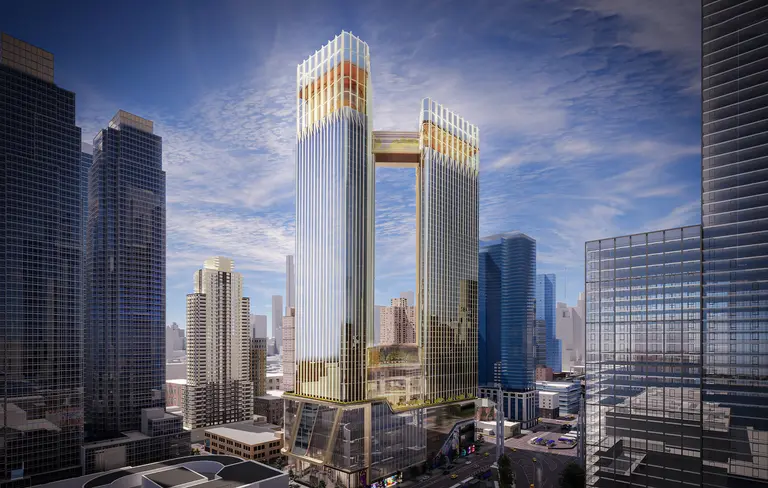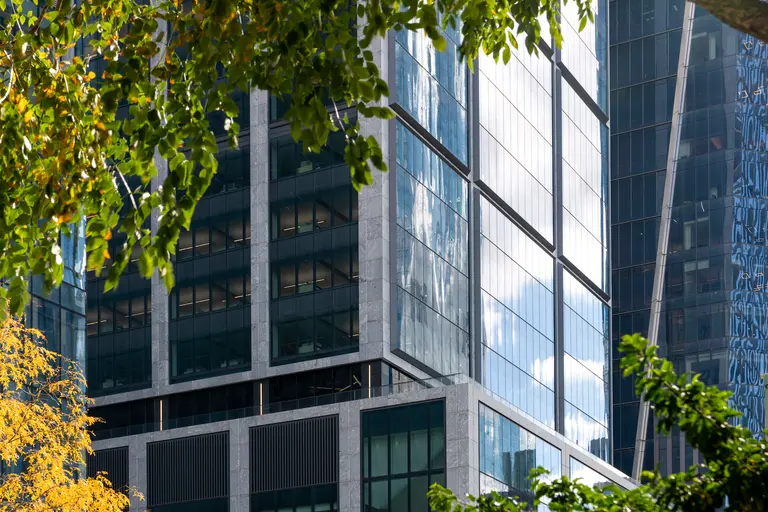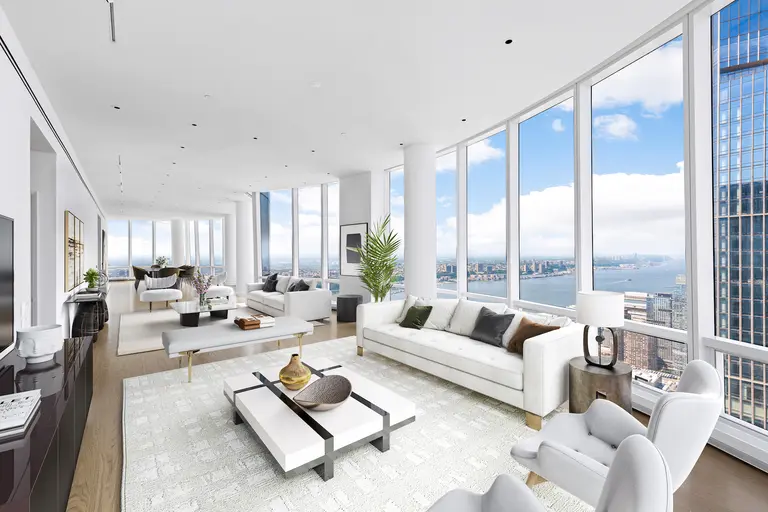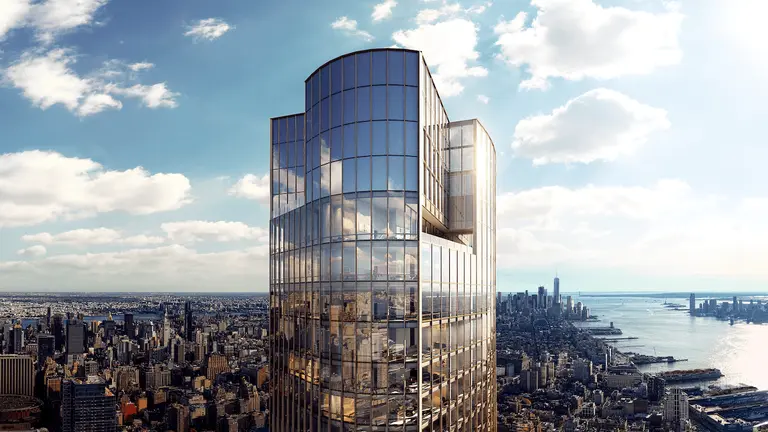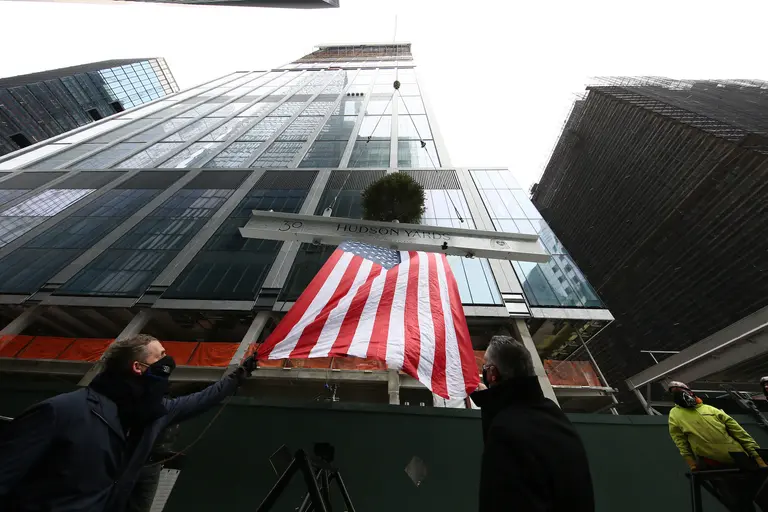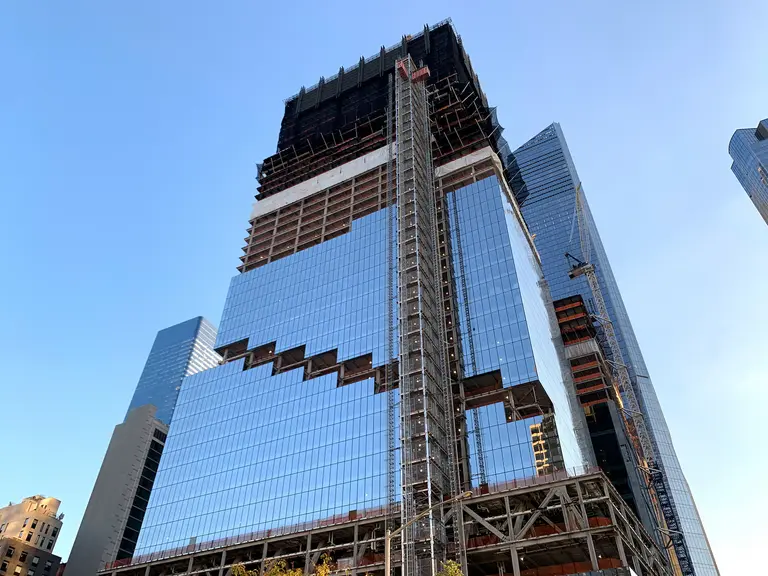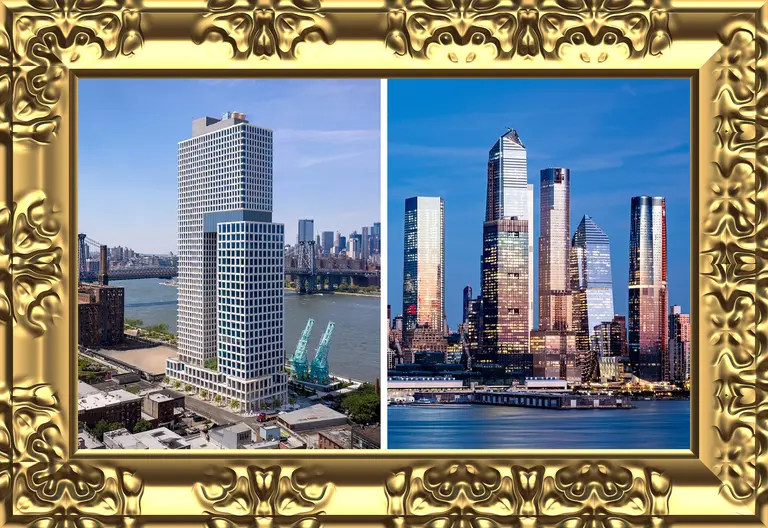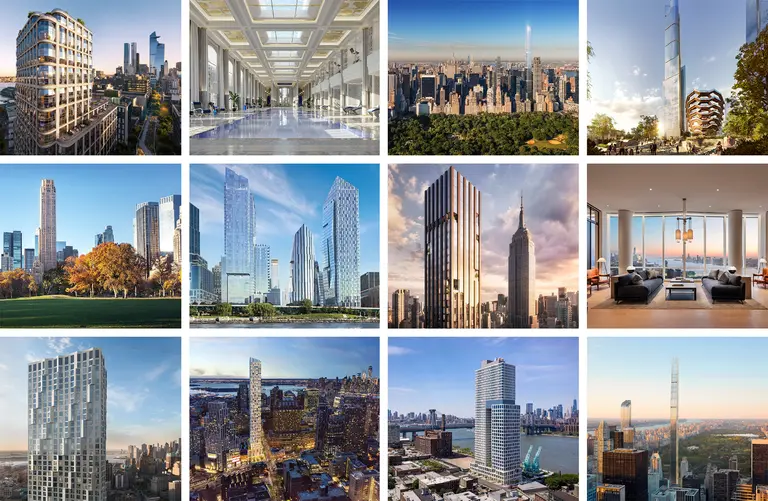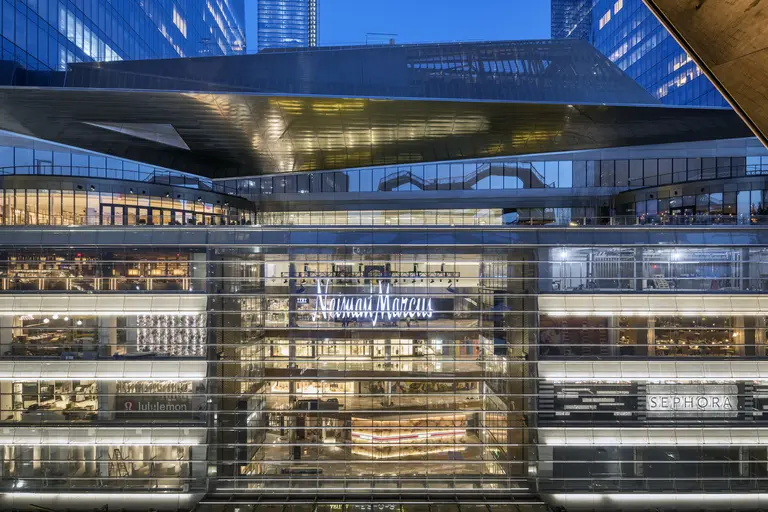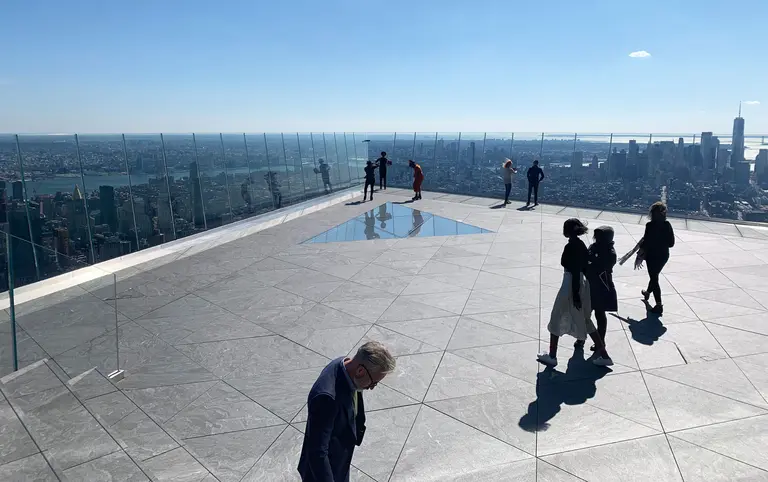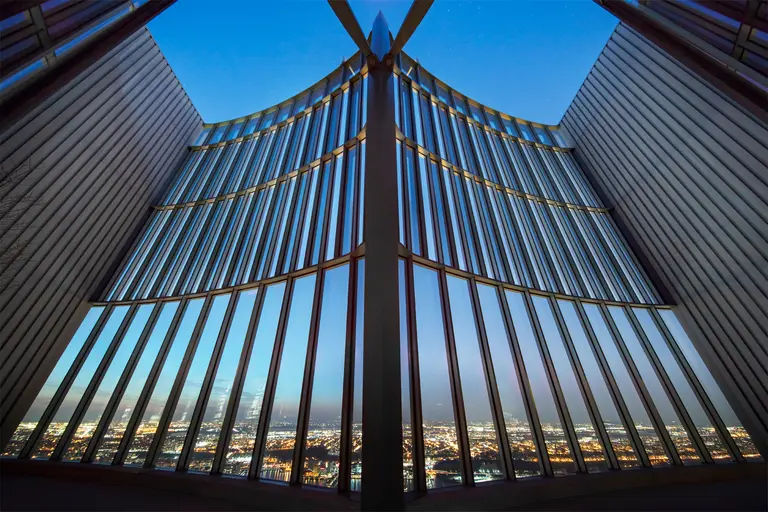Hudson Yards developers say protection against natural disasters and terrorism is part of its design
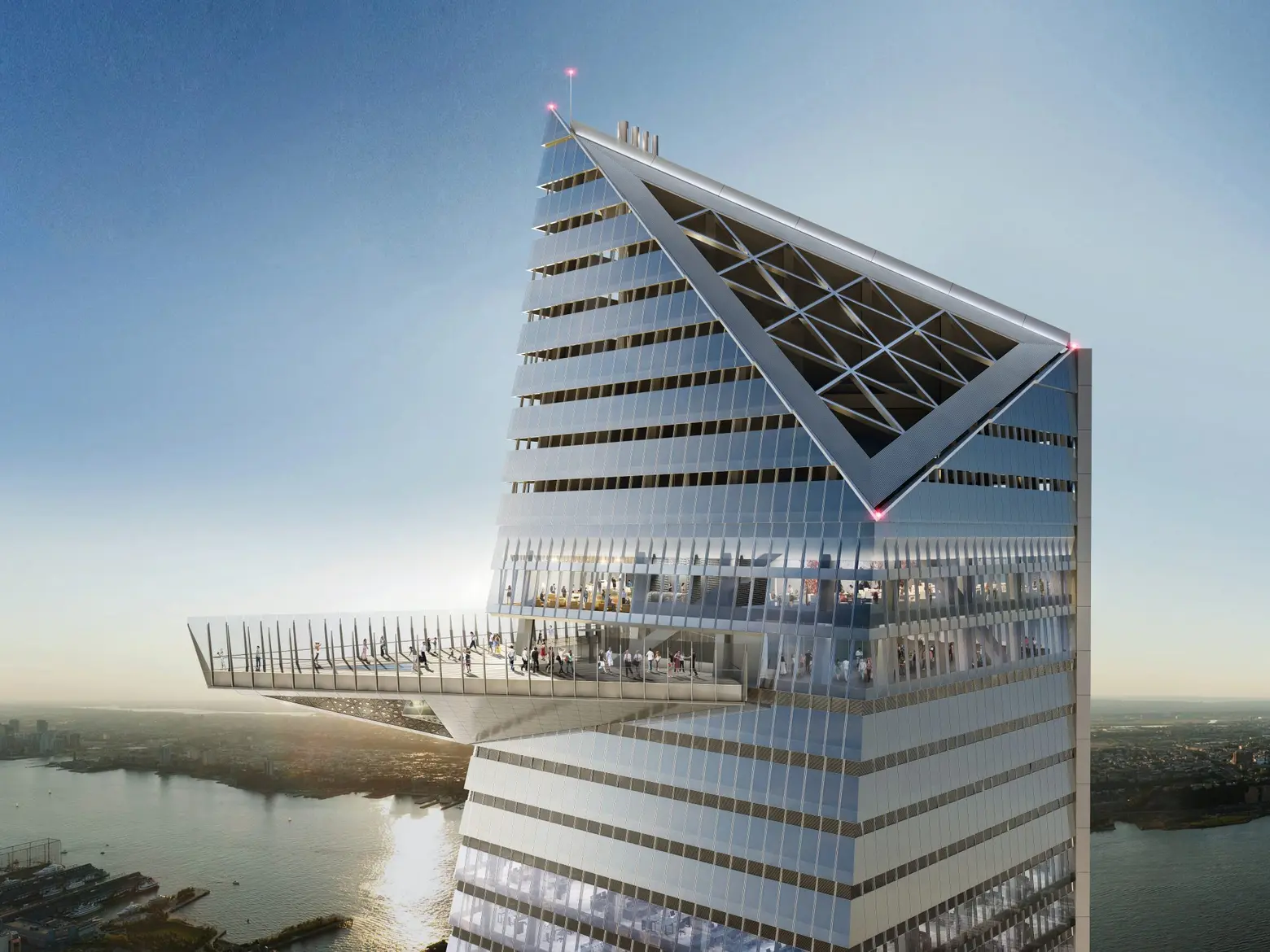
Rendering of the observation deck at 30 Hudson Yards, via Related Companies
The soon-to-open Hudson Yards, the 28-acre development that’s being called the largest private development in the U.S, is not only situated on the Hudson River, but what could pass for a small city could easily be seen as a target for terrorists with its million-square-foot retail center and dining district, the 1,296-foot-tall 30 Hudson Yards, the city’s most expensive office building (50 Hudson Yards) and thousands of pricey apartments. The Wall Street Journal reports that the $25 billion project from Related Companies and Oxford Properties Group claims to be fortress-like in its protection against the wrath of both nature and humankind.
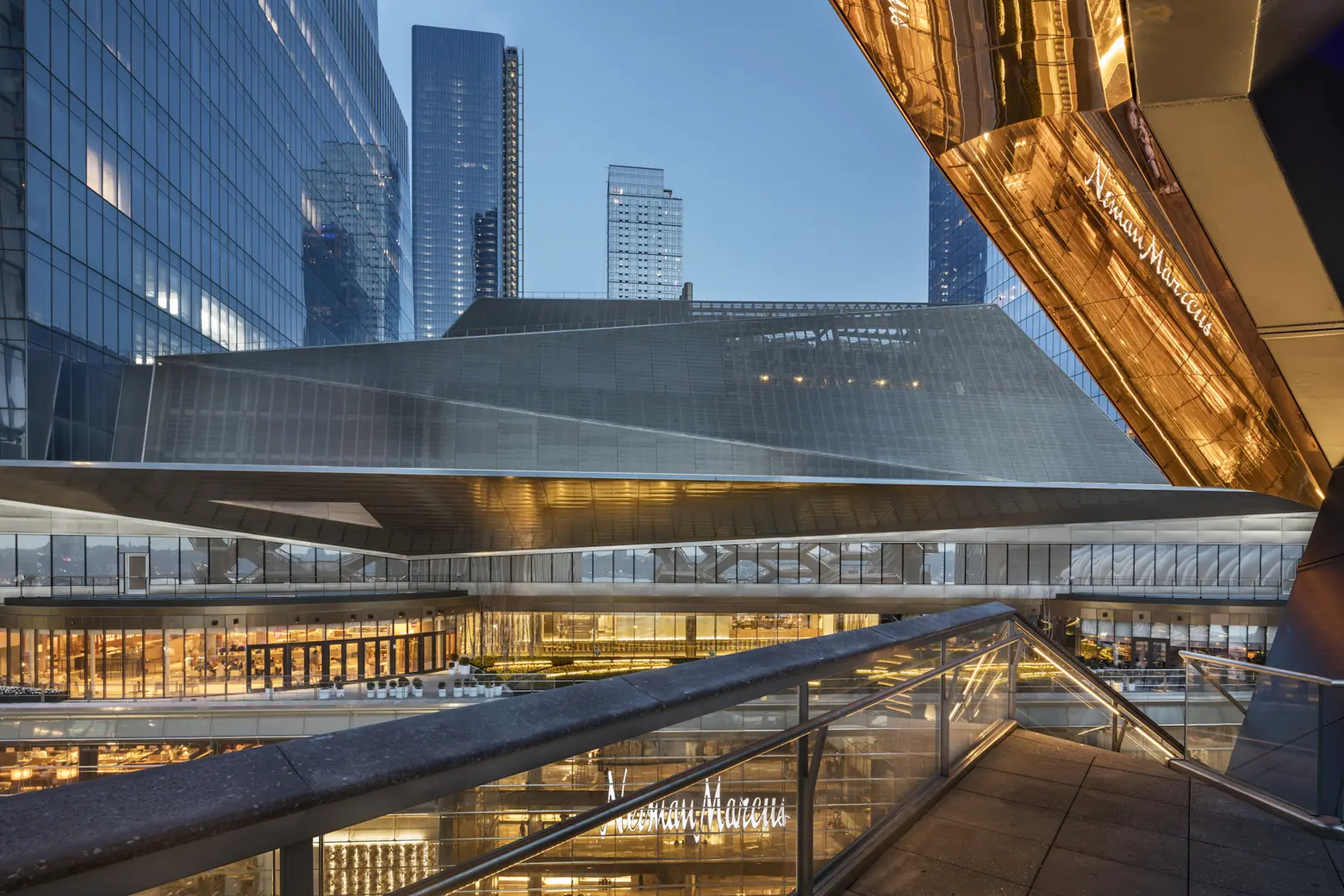
Photo courtesy of Francis Dzikowski for Related-Oxford
The developers learned from the past years’ storms, terrorist attacks and “freakish occurrences” that have besieged the world’s cities to come up with plans to protect all those within its considerable expanse–including a power system that that could withstand a citywide blackout, a rainwater collection system, and police with guard dogs.
Security and resilience have become important selling points for buyers and tenants in a city that has been through events like 2012’s Superstorm Sandy. Former NYC police commissioner Raymond Kelly, who toured the under-construction Hudson Yards, called designing security for a development such as this a “balancing act between making the facility inviting and keeping it safe. You can’t make it an armed camp. There’s a tipping point. A lot of security gives people the message that there is a threat there.”
The damage done by floodwaters in the aforementioned storm led the developers to move some mechanical systems to higher floors and install huge underground “submarine doors” that could be sealed to protect against storm surges. Hudson Yards also has its own power plant to make sure lights and computers stay on even if the city’s power grid fizzles.
Security was also influenced by the Sept. 11 terrorist attacks. Consultants–including former New York City Police Department Commissioner William Bratton–were hired to provide safe contingency plans for scenarios from truck bombs to active shooters and chemical attacks.
To make the mega-development environmentally friendly and “future-proof,” features like a rainwater collection system and a garbage processing plant that will use grinders and dehydrators to reduce food waste are planned.
As far as what’s below, the buildings of Hudson Yards are on solid ground–literally. Their structures extend into the bedrock underneath. Eli Gottlieb, managing partner of project’s engineering firm, Thornton Tomasetti, said, “The whole project in the end is founded on rock.”
[Via WSJ]
RELATED:
